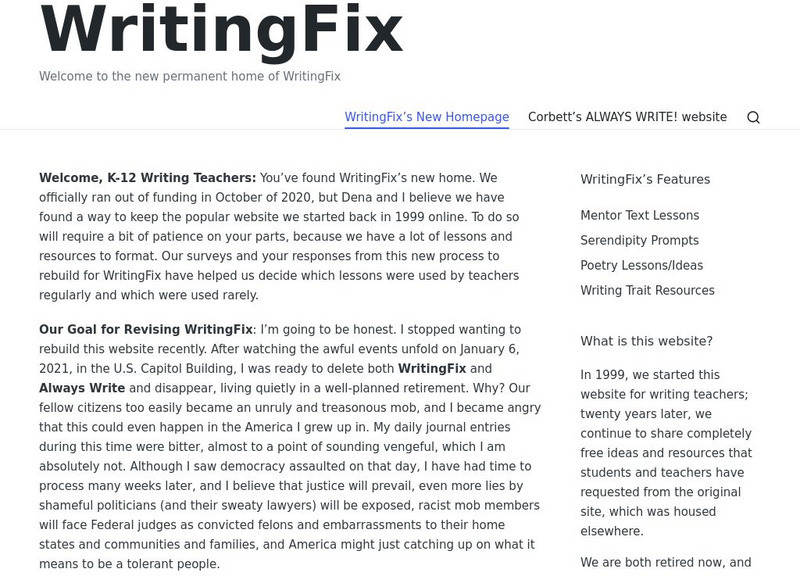Hi, what do you want to do?
Polk Brothers Foundation Center for Urban Education at DePaul University
De Paul University: Center for Urban Education: I Can Analyze a Story or History [Pdf]
This graphic organizer can be used to help students analyze a story or a historical event. Students will look closely at the story's characters or people involved in the historical event. Then they will summarize the story or event, and...
Polk Brothers Foundation Center for Urban Education at DePaul University
De Paul University: Center for Urban Education: I Can Identify and Infer Character Traits[pdf]
Students will identify character traits directly and inferentially with the help of this graphic organizer. Students will summarize their findings after completing the graphic organizer.
Polk Brothers Foundation Center for Urban Education at DePaul University
Depaul University: Center for Urban Education: Evaluate Decisions [Pdf]
A nonfiction graphic organizer is available to help students evaluate decisions of people. Students will analyze how characters interact and develop throughout the course of a nonfiction text.
Other
Writing Is Exciting!
Students and teachers can use this site to find detailed information on effective and creative story writing.
The English Teacher
Teacher2b.com: Notes for "To Kill a Mockingbird"
Review notes for the novel "To Kill A Mockingbird" by Harper Lee.
Other
Literature Unit: "A Day No Pigs Would Die"
This site features questions for each of the chapters in Robert Newton Peck's "A Day No Pigs Would Die."
Polk Brothers Foundation Center for Urban Education at DePaul University
De Paul University: Center for Urban Education: I Can Identify and Infer Character Traits[pdf]
A poster offers guiding questions to help students with identifying character traits. Guiding questions are also provided to help them support their inferences about the character traits.
ReadWriteThink
Read Write Think: Book Report Alternative: Examine Story Elements Using Comic Stri
Comic frames are traditionally used to illustrate a story in a short, concise format. In this lesson plan, students use a six-paneled comic strip frame to create a story map, summarizing a book or story that they have read. Each panel...
ReadWriteThink
Read Write Think: Lights, Camera, Action: Interviewing a Book Character
Students get the inside scoop on a story when they create interview questions and answers for characters in the books they read.
ReadWriteThink
Read Write Think: Planning Story Characters Using Interactive Trading Cards
Young scholars use trading cards to examine fictional characters in a story.
ReadWriteThink
Read Write Think: Get the Reel Scoop: Comparing Books to Movies
Students compare a book to its film adaptation, and then perform readers theater of a scene from the book that they feel was not well represented in the movie version.
ReadWriteThink
Read Write Think: Using Picture Books to Teach Plot Development and Confict Res.
Students read picture books to explore the concepts of plot development and conflict resolution. They first learn about the connections between reading and writing, and then revise their own writing. CCSS.ELA-Literacy.CCRA.R.4
Bartleby
Bartleby.com: King Richard Ii
This site has some famous quotations from William Shakespeare's play "King Richard III". Use the next link to find more quotes.
ReadWriteThink
Read Write Think: Flying to Freedom: Tar Beach & the People Could Fly
Comparing and contrasting works and looking for underlying themes and messages are at the heart of this multicultural lesson plan. Provides links to several background resources, and suggestions for assessment.
ReadWriteThink
Read Write Think: Adjectives and Character Traits
Interactive lesson plan which allows for elementary young scholars to learn the "Part of speech," concepts of adjectives as well as effective characterization techniques. Uses the story of Charlotte's Web.
ReadWriteThink
Read Write Think: How and Why Characters Change
This lesson plan examines and makes inferences into the change and development in characters. Included in the lesson plan is an overview, practice, objectives, resources, preparation, and more.
ReadWriteThink
Read Write Think: Fairy Tale Autobiographies
Lesson which requires learners to analyze fairy tales for literary elements such as characters, setting, conflict, and theme. Students work in groups and write about, edit, and illustrate their fairy tales.
ReadWriteThink
Read Write Think: Story Character Homepage
Online lesson which allows for students to create an electronic "Home page," for a specific character when reading a class novel. Students research and create web pages, then present findings to the class.
ReadWriteThink
Read Write Think: Mapping Characters Across Book Series
This lesson plan examines the changes and developments in characters which appear in a series. Included in the lesson plan is an overview, practice, objectives, resources, preparation, and more.
ReadWriteThink
Read Write Think: Creating Careers for Characters
Interactive instructional activity which allows students to actually "become" a character in a story they have read. Students analyze and evaluate their character, and extend the activity into choosing a career for that character.
Polk Brothers Foundation Center for Urban Education at DePaul University
De Paul University: Center for Urban Education: Identify/infer Character Traits [Pdf]
This page contains links for three graphic organizers. Students will use graphic organizers to identify character traits, infer character traits, and support inferences with text evidence.
John F. Kennedy Center
The Kennedy Center: Arts Edge: What a Character!
In this lesson, students analyze how a character's personality traits, actions, and motives influence the plot of a story. Students also learn how storytellers use their face, body, and voice, as well as the five senses, to enhance the...
Other
K 3 Learning pages.com: Fairy Tales
This site provides links to elementary information about Fairy Tales. You will find lesson plans, poems, songs, activities and more when you delve into these resources. Some links are no longer available.
Writing Fix
Writing Fix: Actions Speak Louder Than Words
After hearing and discussing an excerpt from Sharon Creech's Walk Two Moons, students will plan to create a unique description of a character that uses memorable actions that "show" a person's character. They will brainstorm verbs that...





![De Paul University: Center for Urban Education: I Can Analyze a Story or History [Pdf] Graphic De Paul University: Center for Urban Education: I Can Analyze a Story or History [Pdf] Graphic](https://static.lp.lexp.cloud/images/attachment_defaults/resource/large/FPO-knovation.png)






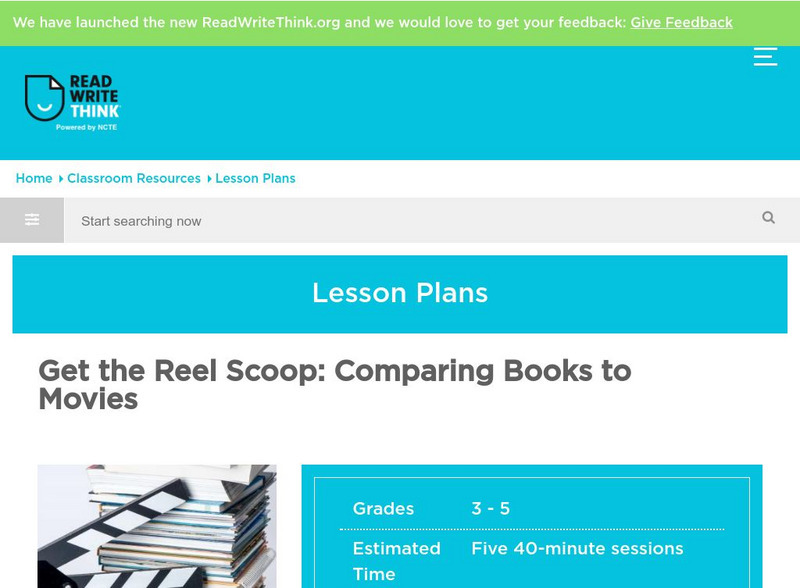



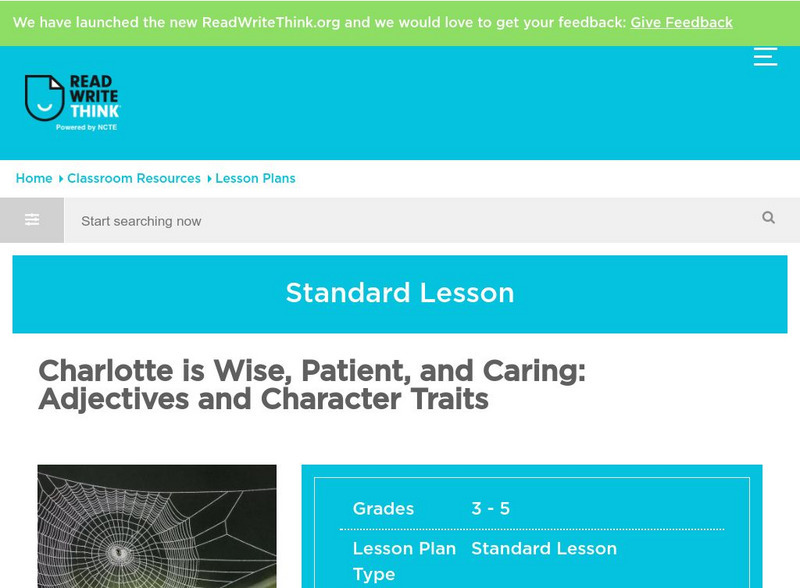

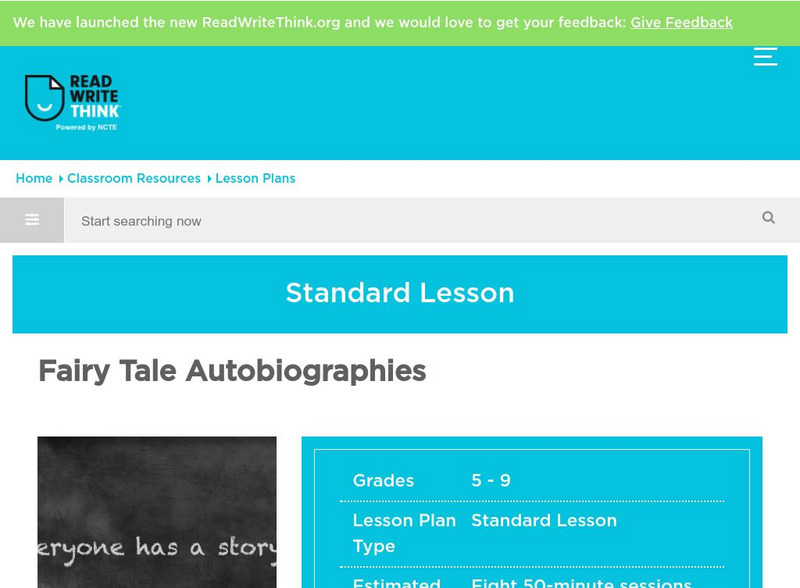
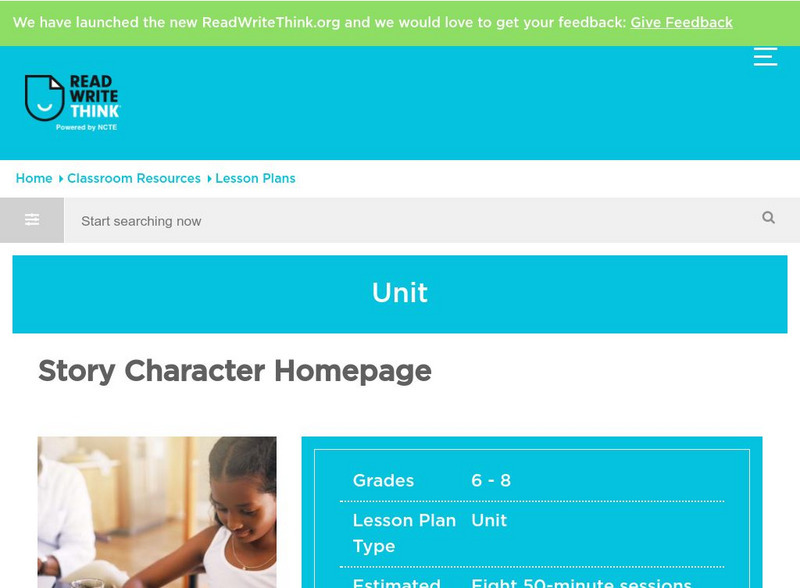


![De Paul University: Center for Urban Education: Identify/infer Character Traits [Pdf] Graphic De Paul University: Center for Urban Education: Identify/infer Character Traits [Pdf] Graphic](https://content.lessonplanet.com/knovation/original/119983-62ee3880b7ac71dbc7bc636a19f336da.jpg?1661787060)


